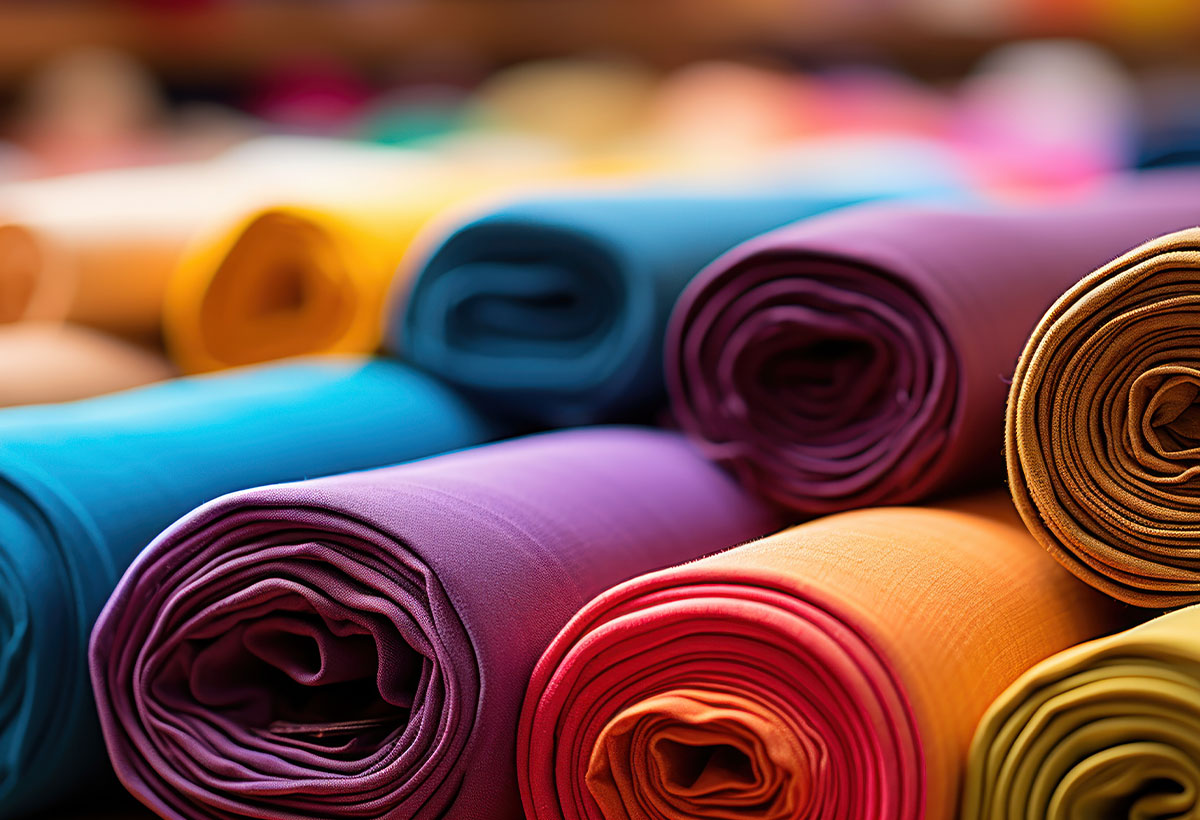Technological advances are constantly transforming the textile industry, changing the way fabrics are developed, processed, and applied.
In an increasingly demanding market, it is essential to understand new production methods in order to innovate efficiently, meet sustainability demands, and remain competitive.
In this content, you will check out the main categories of textile fabrics and how innovation has expanded the possibilities for the sector.
Let’s go?
What is a textile fabric and what are its main types?
Textile fabric is both the primary input and output of textile industry processes.
It serves as the basis for the manufacture of products such as clothing, bedding, tableware, and bath products, as well as decorative and household items.
In this case, it is a material composed of the interweaving of natural or synthetic fibers and yarns. And it can be produced through techniques such as weaving, knitting or felting, for example.
There is a wide variety of fabrics available on the market, developed to meet different production demands. The choice of the most suitable material for a given application is directly influenced by the specific characteristics of each composition.
In any case, the main textile fabrics are:
- Natural: those of animal, mineral, and vegetable origin;
- Synthetics: manufactured based on chemicals;
- Artificial: results of cellulosic fibers and protein fibers.
But they can also be categorized according to the web/weave, see below:
Flat woven fabric
Flat woven fabrics are formed by interlacing two threads at right angles, with the weft running horizontally and the warp vertically.
Mesh
It is developed by interconnected loops, which support each other laterally and vertically, from one or more threads.
Blended fabrics
They are meshes with periodic insertion of weft yarn to improve dimensional stability, known as laid-in mesh.
Woven
Produced in warp knitting machines (weavers). This textile resembles plain weave, but it incorporates knitted columns instead of warp yarns, which boosts productivity.
Non-woven
Formed by joining fibers in layers, which are then joined together through physical and/or chemical processes, resulting in a continuous weave.
Specialty fabrics
They have a mixed structure of flat fabric, mesh, and non-woven, or are made up of polymers applied to fabrics.
>> Read also: Find out which fabrics are suitable for sublimation
The most significant advancements in textile fabric

With the natural evolution of technologies, the textile industry has been exploring new solutions to keep up with current consumer and market demands.
For this reason, innovations in textile fabrics are primarily driven by the need for greater functionality, sustainability, and production efficiency.
Please find below the three most important ones. Look!
- Smart fabrics
Smart textile fabric is the innovation that has most revolutionized the sector.
This material is composed of integrated technologies that enable interaction with external stimuli. It can be developed for specific functions, such as:
- Temperature Regulation;
- Antibacterial action;
- Inclusion of sensors and photosensitive properties.
The SENAI CETIQT project is an example of innovation in this field. It developed advanced uniforms for Marines. These garments are designed to be antibacterial, highly resistant, and capable of absorbing body heat.
Additionally, they have incorporated anti-infrared technology to help minimize thermal detection and make military personnel less visible to infrared sensors and cameras.
>> Read also: Smart factories: learn all about this textile trend
- Sustainable fabrics
With the rise of environmental consciousness among consumers and the market, sustainability has become a prominent issue in the textile industry, a sector historically associated with significant environmental impacts.
Consequently, numerous companies are reevaluating textile fabric based on sustainability, producing less aggressive materials. Examples of these materials are bamboo and plastic bottles.
It is not surprising that upcycling has been extensively studied in the textile and fashion industry to reduce textile waste and environmental impacts.
At Febratex 2024, NILIT showcased two innovative fibers: SENSIL® Flow, a 100% recyclable alternative to elastane, and SENSIL® Toughtex, which is available in high-strength and sustainable versions.
The company also launched the SENSIL® FABRIC COLLECTION, featuring certified fabrics that offer high performance and low environmental impact.
>> Read also: Learn about the latest trends in the textile industry
- 3D Printing on Fabrics
3D printing, a technology of Industry 4.0, has experienced increased utilization. Not only in the finishing process of the textile fabric, but also in its production.
A 3D printer is already in use to produce several smaller-scale items, including shoes, bags, and trim pieces.
>> Also read: Digital textile printing: continuous process and low cost
Understand the impact of technology on textile fabric production!
Textile fabric, in its various forms and compositions, is a fundamental component of modern industry. It is essential not only for fashion and apparel but also for technical, functional, and sustainable applications.
Innovations in materials and production methods have transformed this landscape, paving the way for increasingly efficient, intelligent, and market-aligned solutions.
Please download our free eBook to discover how to improve your textile production by utilizing textile technology. Discover how contemporary and streamlined operations can transform your industry and position your business for success in the evolving textile sector.
What is the impact of process optimization on the adoption of these innovations?
To begin developing such innovations in textile fabric, it is essential to have an optimized, intelligent and precise production.
Thus, all stages of production, including processing, weaving, and garment making, must integrate innovative technologies that enhance efficiency, economy, and sustainability.
For example, Delta’s textile machinery can reduce energy consumption by up to:
- 50% in plastic consumption for roll packaging;
- 80% in water consumption for shrinkage tests;
- 90% in knitting relaxation time for hemming.
This innovation enables the adoption of smart, recyclable fabrics while also facilitating large-scale production at a lower cost.
By adopting modern machinery, optimising water and energy usage, and implementing a reuse strategy, your industry can seamlessly integrate innovation without compromising productivity.
In summary, the modernization of industrial processes serves as the foundation that allows technological innovations to truly flourish in the textile market.



